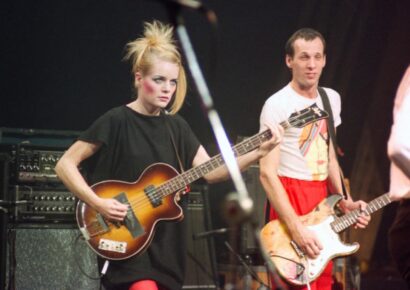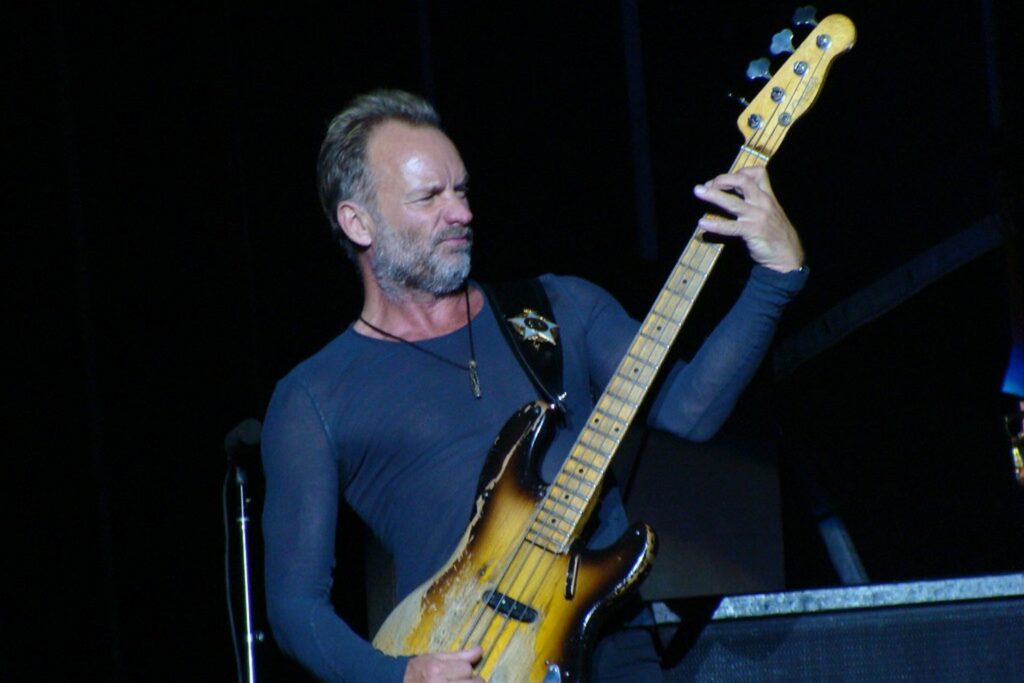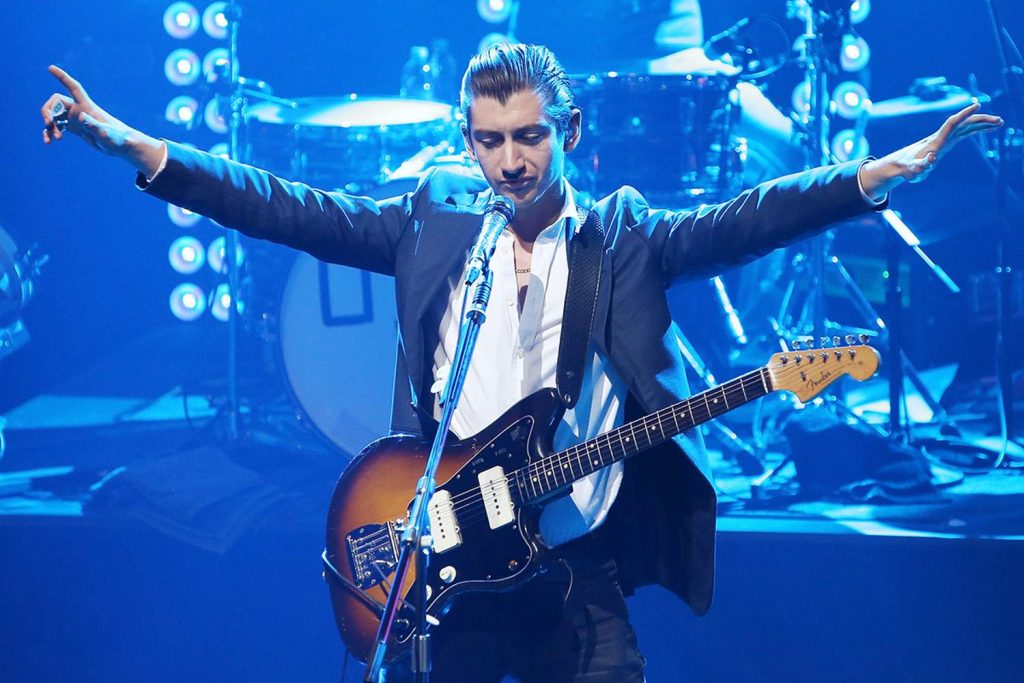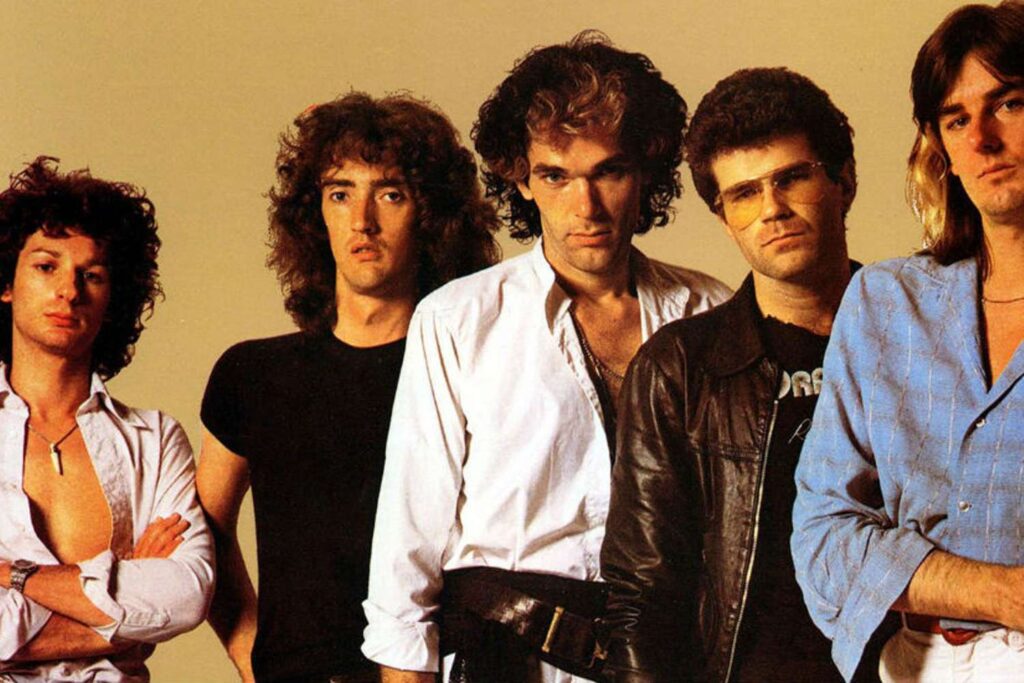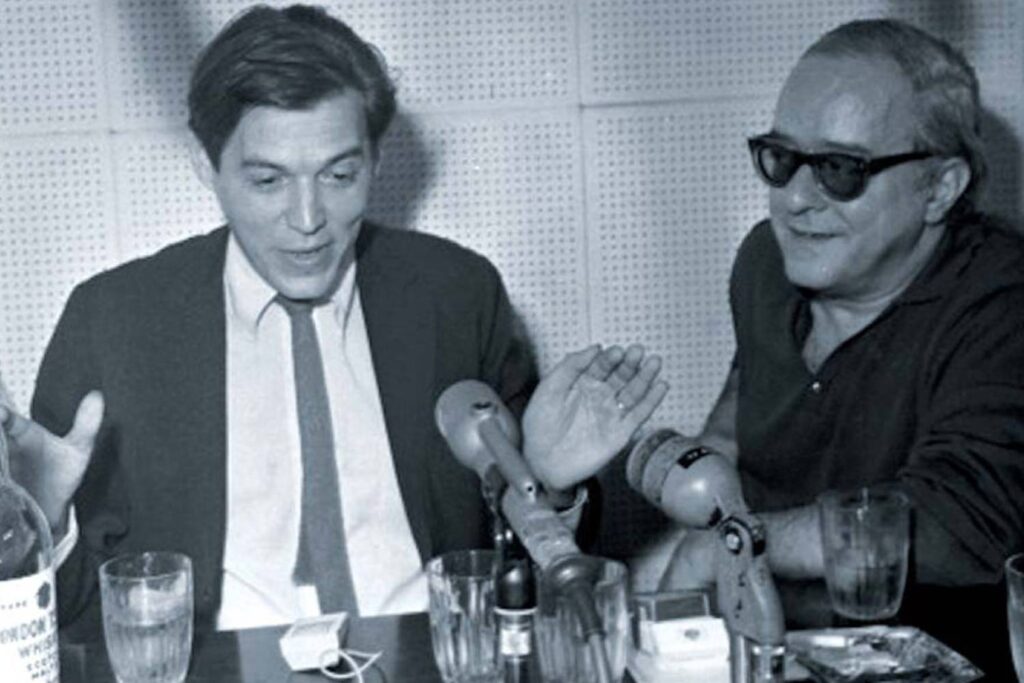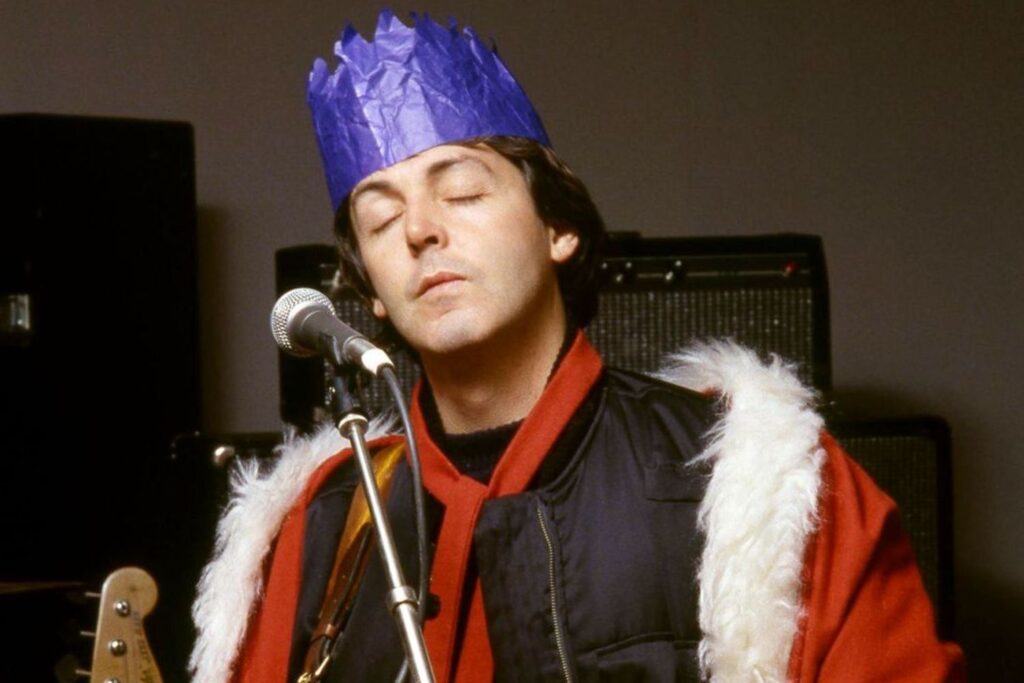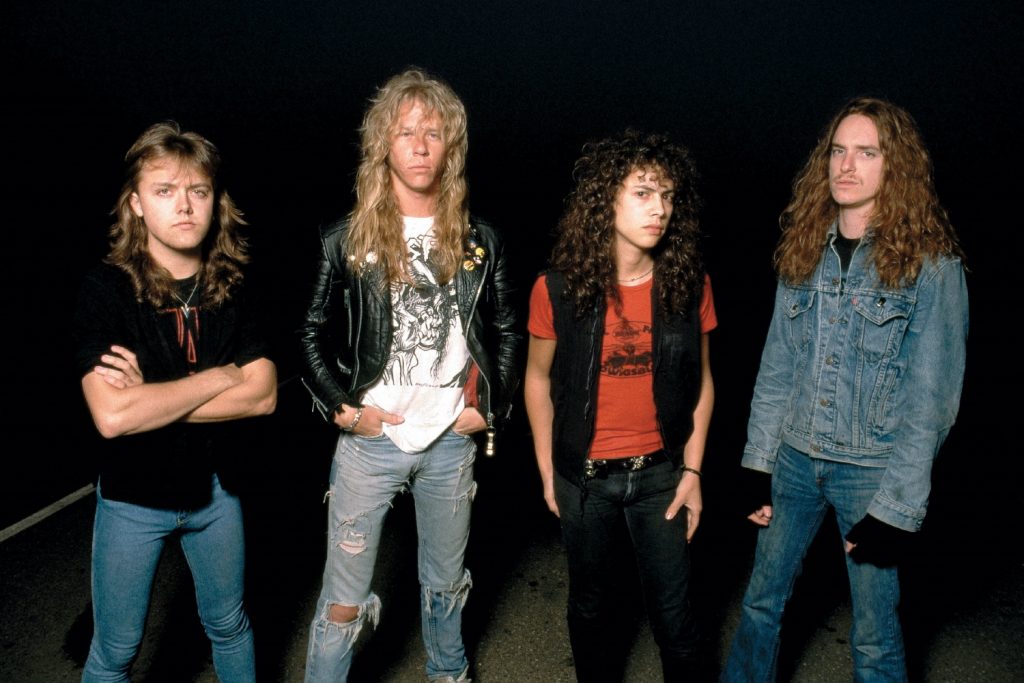From Friends to Succession to The Sopranos and more, we explore the stories behind 10 iconic TV theme songs.
A darkly themed song written by a 14-year old, a female empowerment anthem becoming synonymous with gangsters, a demo nailed in one take, a code for mental health, a REM soundalike and an ode to mothers and daughters. These are the stories behind some of the best TV theme songs ever.
Read up on all the latest features and columns here.
The Sopranos
“Woke Up This Morning”
A life sentence given to English woman Sara Thornton in 1990 for killing her abusive alcoholic husband became a cause celebre for women’s groups.
They argued that the law needed to be more lenient for survivors like Thornton, and she was out five years later.
Inspired by the case, Rob Spragg co-wrote “Woke Up This Morning”, about female empowerment for his band Alabama 3.
The Sopranos creator David Chase pricked his ears up at lines “You woke up this morning / Got yourself a gun,” handed over $40,000 for its use, and it became a gangster’s anthem, sampled by Nas, Beenie Man and Brothas & Sistas.
Frasier
“Tossed Salad and Scrambled Eggs”
When the creators of Frasier chose TV composer Bruce Miller (Knots Landing, Wings) to whip up a theme song they had two stipulations.
Make it jazzy, and don’t be specific about the show or the characters.
Miller said, “I immediately wrote the song/music itself, but then I needed a lyric that would work.”
Musician friend Darryl Phinnesse came up with coded lines as “tossed salads and scrambled eggs” for “mixed up”, referring to radio psychiatrist Frasier Crane’s patients, and his own family.
“Hey baby I hear the blues a-callin” was about people ringing the radio show with their problems, and “But maybe I seem a bit confused/ “Maybe, but I got you pegged” was indicative of Frasier coming up with solutions.
Miller had crooner Mel Torme aka “the Velvet Fog” in mind to sing the track, but it went to Kelsey Grammer, who played Crane in eleven seasons.
With Frasier getting a reboot on Paramount+ after it ceased in 2004, one wonders if “Tossed Salad and Scrambled Eggs” will make it back too.
Batman
“Batman Theme”
Producers of the 1966 show wanted a theme as campy, outrageous and goofy as the show, and with a catchiness that would inspire viewers to cheer on Batman and Robin and heartily boo the villains.
It took composer Neal Hefti, American jazz trumpeter (Barefoot In The Park, The Odd Couple) a few months of agonising to come up with a tune that did justice to the specifications.
When he did, he had little hope that the producers would take to it.
“I had to sing it and play it on the piano. Well, I’m no singer, and I’m no pianist,” he said.
“My first thought was that they were going to throw me out, very quickly.
“But as I was going through it, I heard them both reacting with statements like, ‘Oh, that’s kicky. That will be good in the car chase.’”
The Grammy-winning 12-bar blues instrumental nods to spy movies and surf music of the time.
Hefti recounted in Jon Burlingame’s TV’s Biggest Hits, the song has “bass guitar, low brass and percussion to create a driving rhythm, while an eight-voice chorus sings ‘Batman!’ (eleven times) in harmony with the trumpets”.
There is a misconception the chorus is actually a horn section, started by Batman actor Adam West in his 1994 book Back To The Batcave.
But Hefti insisted that it was sung by four tenors and four sopranos of The Ron Hicklin Singers.
The song has been covered by REM, The Who, The Jam, Eminem, Prince, The Ventures and Voivod,
George Harrison was even inspired by the theme for “Taxman” from the Beatles’ Revolver.
Ritchie Blackmore used the main riff in “Space Truckin'” by Deep Purple.
Friends
“I’ll Be There For You”
The producers of Friends, which debuted in America in 1994, initially approached R.E.M. about using their 1991 hit “Shiny Happy People” as the show’s theme.
When Michael Stipe passed, Friends producers David Crane and Marta Kauffman brought in songwriters Michael Skloff and Allee Willis to help come up with a REM soundalike, recorded by hip duo The Rembrandts.
Willis recalled of the “I’ll be there for you” line: “It was about the loyalty of friends. No matter how screwed up your life was, I’ll be there for you.”
“I’ll Be There For You” became a chart hit when a Nashville radio station multi-looped the original 45-second version to make it three minutes.
Its listener request line blew up, and other stations followed.
The Rembrandts’ record company pulled their third album L.P. from release so the duo could cut a version of the song with extra verses.
It charted in 15 countries, reaching #1 in America (where the show had 21 million viewers), as well as in Australia and Canada.
Neighbours
“Neighbours”
In 1985 when Australian TV producer Reg Grundy came up with the idea for a soap set in the fictional Melbourne suburb of Erinsborough, his name for it was originally Ramsay Street.
At the time, hugely successful British songwriting team Jackie Trent and Tony Hatch were living in Sydney, and Grundy asked them to pitch a song.
To avoid comparisons with UK show Coronation Street, they titled theirs “Neighbours” after its tagline “That’s when good neighbours become good friends.”
Trent and Hatch finished the song off in a day, and at 10 that night rang crooner Barry Crocker at his home and asked him to sing on the demo.
Crocker nailed it in one take, and the tape was on Grundy’s table the next morning.
He immediately gave it the thumbs-up.
“Fine, we’ll record it properly now,” Hatch said.
“Don’t touch it, I love it the way it is.” Grundy insisted.
There were nine different versions through the years— from jazzy to hard rock – as producers tried to modernise it or adapted it to the varying lengths of screen credits as characters came and went.
Succession
“Succession (Main Title Theme)”
For composer Nicholas Britell (Moonlight, The Big Short), taking the viewer into the gritty reality world of black comedy-drama Succession could only be done through classical music and hip hop.
He had studied classical piano and at Harvard University and played keys in hip hop group Witness Protection Program, making four beats a day.
The Emmy-winning “Succession (Main Title Theme)” was made up of out-of-sync pianos, strings, brass, and deliberately oversized beats from the Roland TR-808 drum machine.
It was a discordant result, and Britell thought when he sent the file to the show’s creator Jesse Armstrong, “I hope they like this because if they don’t, I actually don’t know what else to do.”
Immediately came the return email: “I think the right response to this is: F*** yeah!’”
Gilligan’s Island
“The Ballad of Gilligan’s Isle”
The first version of the Gilligan’s Island theme was calypso-flavoured, written in 1964 by an unknown Johnny Williams, whose claim to fame was that he wrote the incidental music for the show.
It was sung by show creator Sherwood Schwartz, who dropped it and opted to co-write with George Wyle, the one remembered today about the castaways who went on a three hour cruise on the S.S. Minnow and ended up shipwrecked on a tropical island.
Johnny changed his name to John and went on to compose box office smashes such as Star Wars, Harry Potter and Indiana Jones.
The Williams version reflected how originally, the professor was a high school teacher, Ginger the movie star and Mary Ann the girl from next door were secretaries, and the ride was six hours.
The final version – “Just sit right back, and you’ll hear a tale…”—was sung by folk group The Wellingtons (who once appeared on the show as The Mosquitoes; they also sang the Davy Crockett theme) and then The Eligibles for the second and third seasons.
Gilmore Girls
“Where You Lead”
“Where You Lead” was co-written in 1970 by Carole King for her classic Tapestry album and was a minor hit for Barbra Streisand.
But King always felt the lyrics by Toni Stern — “I always wanted a real home / With flowers on the windowsill / But if you wanna live in New York City / Honey, you know I will” – came across as submissive.
In 2000 when approached about using the song for dramedy series Gilmore Girls, King grabbed the opportunity to turn it into a a mother-daughter relationship, as per its theme, and got her daughter Louise Goffin to duet with her.
Scrubs
“Superman”
“Superman” was written and performed by Lazlo Bane. It was originally on the soundtrack album for the film The Tao of Steve in 2000, with the star of Scrubs, Zach Braff, liking the song and showing it to the show’s creator in the same year. Scrubs was a success and it helped “Superman” rise to fame, the song also being released on Lazlo Bane’s 2022 album All the Time in the World.
Zach Braff went onto produce the song’s music video, using behind-the-scenes footage from Scrubs, the video featuring the set of Scrubs‘ Sacred Heart Hospital.
The Drew Carey Show
“Five O’ Clock World” / “Cleveland Rocks”
The Drew Carey Show (1995 to 2004) managed to gain chart success with both of its theme songs.
The first was “Five O’ Clock World” recorded in 1965 by The Vogues from Pittsburgh (it was a regional #1), and was later covered by Bowling for Soup, Julian Cope, Hal Ketchum, The Proclaimers and Ballistic Kisses.
“Cleveland Rocks”, a nod to the Ohio town where the show was based (and where Carey was born), was written by British band Mott The Hoople singer Ian Hunter for his 1979 album You’re Never Alone With A Schizophrenic.
“People used to make fun of Cleveland as a uncool place which I didn’t agree with. It was a city with a lot of heart.”
It became the unofficial anthem for the city, at sports events, radio shows and even weddings.
The Carey theme was recorded in 1997 by The Presidents of the United States of America.
Read more about TV Theme songs here.

